This is a beginner’s guide to reading fiction about the end of the world as we know it. I’ve tried to vary the style of writing, type of world collapse, time period of release, etc. to provide something for everyone. Many of these have been made into film, but we all know the book is always better right? Enjoy.
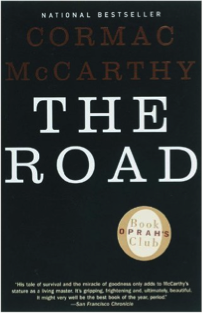
1. The Road by Cormac McCarthy Published 2006
The Road is, by my own estimation, far and away one of the most famous post-apocalyptic novels to date. Having been recommended by Oprah’s book club, The Road was slingshotted into mainstream popularity. It’s the perfect place to begin your new obsession with post-apocalyptic writing. If you are familiar with Cormac McCarty’s writing, he mainly writes about the Southwest United states and this is his first jaunt into telling the story of the “end times” as he sees it. The tale he tells is of a man and his son, with occasional flashbacks to when they were joined by his wife before her eventual departure from their lives. The story describes their journey to the coast from wherever they are in hopes of making it south before the next winner. Along the way they encounter many typical nemeses’ common in post-apocalyptic storytelling; starvation, cannibals, forest fires, and unending desolation. McCarthy’s writing style is visceral to the bone and really makes the reader more involved than they might be comfortable with in helping this father show his son that there still is light in a world full of darkness.
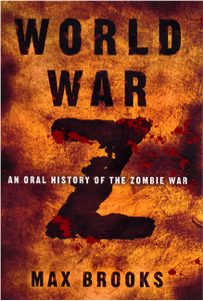
2. World War Z by Max Brooks Published 2006
World War Z is a great way to dabble in the zombie genre. If you’ve seen the movie, it is not an accurate representation of the book at all. There are some small things that happen in the movie that also happen in this book but there is no Brad Pitt character here running around saving the world from zombies. This book reads more like a history book than like your typical novel. If you have A.D.D. like me, this book might be just the thing for you. It jumps from here to there from character to character, place to place and story to story. The story is a series of personal accounts told by a fictional “Post War Commission” established by the United Nations. The book describes the many facets of the “zombie war” and its affects on people, the environment, relationships and sovereign nations over many years. Typical themes of survivalism, fear, uncertainty and general humanity make this book one wild ride for fans of the zombie apocalypse.
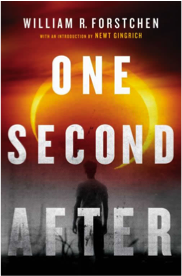
3. One Second After by William R. Forstchen Published 2009
I don’t think it’s very common for books to be recommended to all Americans on the floor of Congress. That’s where One Second After differs from almost every other book I’ve ever read. One Second After takes place directly after an electromagnetic pulse attack on the United States. The setting for the book is a small mountain town in the North Carolina and its surrounding areas. The main character is Professor John Matherson and the novel focuses on his fight to protect his family and the leadership role he inherits in the local community. One interesting facet of this novel that isn’t focused on by many others is the “die-off” sequences that Forstchen cleverly predicts which describes the different periods when sections of the population will die off. The elderly and injured needing technology for survival, people who will perish from diseases brought to the fore by reduced living standards, people who require medicine and regular medical care, starvation and eventually violence. Forstchen’s novel takes the reader on a disturbingly realistic journey that many people think is a real possibility of what could happen in the current world climate and the average American’s lack of preparedness and ability to survive without the benefits modern society provides. If you enjoy One Second After check out the follow up One Year After.
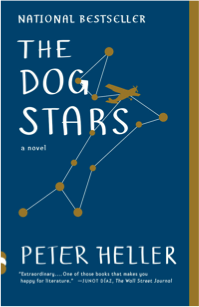
4. The Dog Stars by Peter Heller Published 2012
The Dog Stars is by far my favorite post-apocalyptic novel and up there among the best books I’ve ever read. The Dog Stars takes place after a pandemic and focuses on a survivor named Hig, his dog Jasper and his friend and gun fanatic Bangley as they live out their days living in an airport hanger. It seems that, compared to others, they have it made in their cozy post-apocalyptic situation. We know this because they are constantly defending their land from impending attackers, which Bangley seems to really enjoy. Hig spends the days hunting and scavenging with Jasper and he always seems to come across some close calls when it comes to meeting his demise. Life to Hig, Jasper and Bangley seems all well and good until Hig decides to depart in an airplane. Everything hereafter takes a world already turned upside and turns it on its head again. The Dog Stars is such an enjoyable book for me because this is how I see myself if I were ever in this situation: with my dog, living off the land with my right hand man and a hefty sense of adventure.
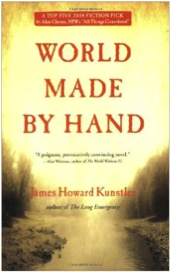
5. World Made by Hand by James Howard Kunstler Published 2008
World Made by Hand would probably be better described as dystopian rather than post-apocalyptic. There’s not a massive event that causes the world to collapse at an alarming rate, but instead a culmination of many years of a slow disassembly of the modern comforts of the world due to many factors. World Made by Hand focuses on a fictional New York town of Union Grove and its inhabitants. The major theme of World Made by Hand is the factionalism that is created by such dire circumstances. The people of the town are forced into many different groups in attempts to survive but also in attempts to live in a somewhat civilized world that allows them to maintain at least some of the humanity they had before it all fell apart. One of the most interesting things about World Made by Hand is the focus on sustainable living. Many novels of this genre have the characters scavenging by eating canned goods and pillaging for manufactured goods made before the downfall of the technologies that made these things possible. These characters, on the other hand, grow their own food, ride horses, use primitive technologies and rely on the community they’ve created in ways America hasn’t seen since our great-great-great grandparents were fighting for survival in ways we will never know. If you’re into community and self-sustainability mixed with your usual post-apocalyptic problems then World Made by Hand and it’s two follow up components The Witch of Hebron and A History of the Future will definitely be worth checking out.
Let me know how it goes…

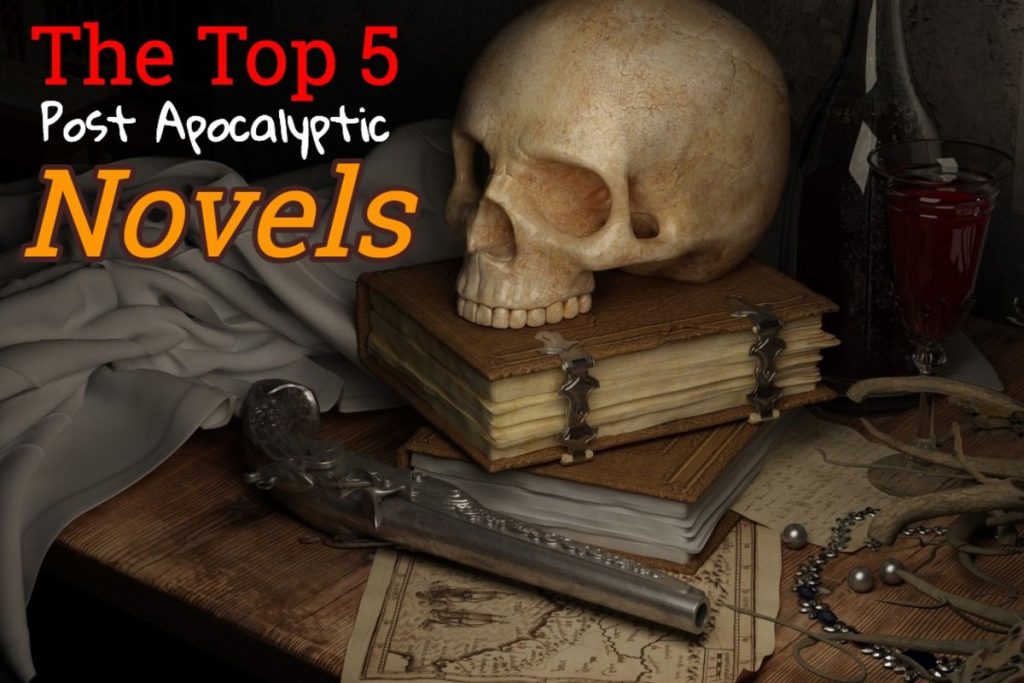
This list is pretty trash. I’ve read every book on it and, save for “The Road”, they’re all highly derivative of previous works and as a whole massively underwhelming. I mean, hell, One Second After is almost a direct port of “Earth Abides” with the global pandemic trope supplanted by a more recent news story.
Pretty much everything on this list owes its creation to the seminal sci-fi works of Bradbury, Harlan Ellison, George R. Stewart, and Walter M. Miller Jr.
Here, I fixed it:
1. Earth Abides
2. A Canticle for Leibowitz
3. A Boy and His Dog (technically it’s a novella, but it did directly inspire “Mad Max, “Fallout”, “The Last of Us”, and that sloppy turd-can “The Dog Stars”… pretty much any story of a post-apocalyptic survivor and his pet)
4. The Bible (for the word ‘apocalypse’ in the first place… dat flood do)
5. I Am Legend (original Richard Matheson version)